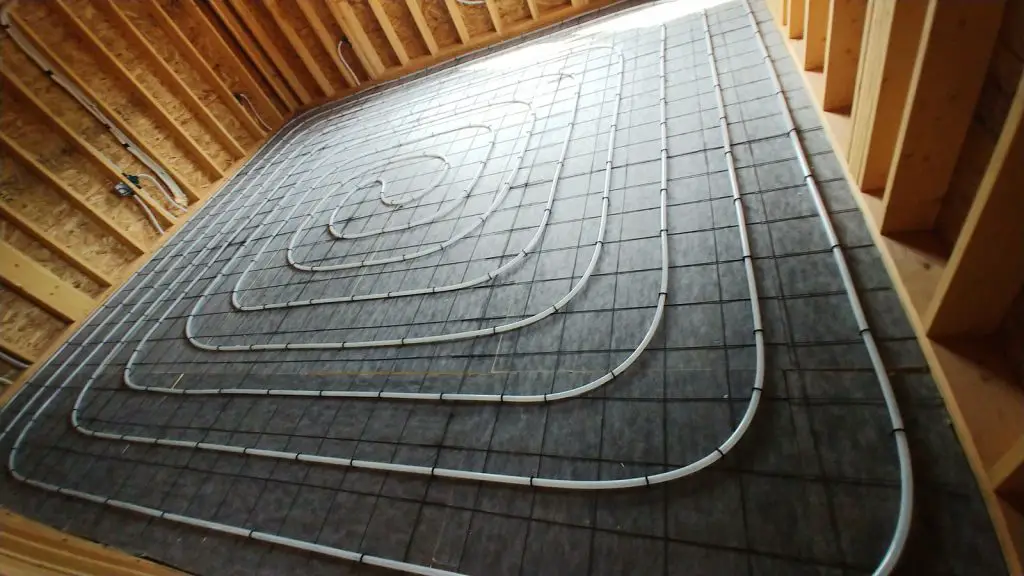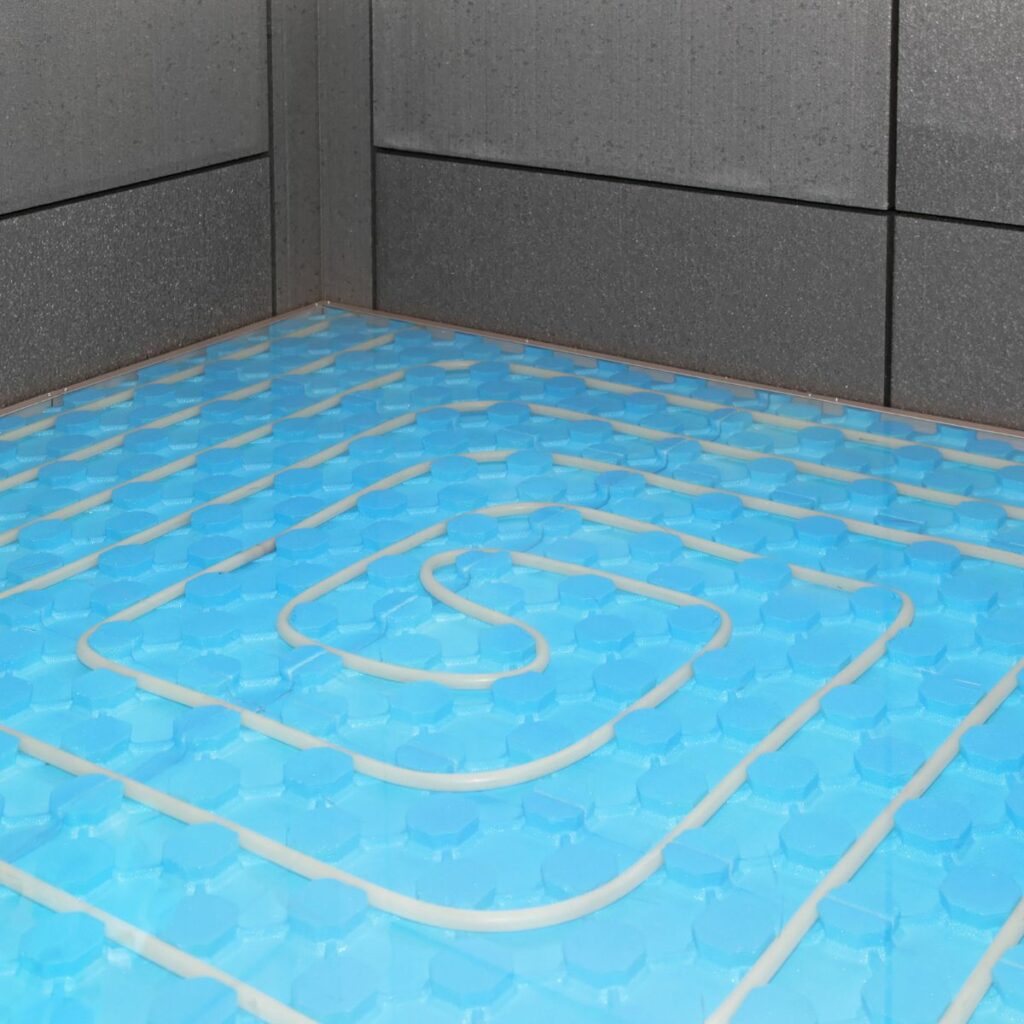Underfloor heating has gained in popularity over recent years and is far more widespread than 10 years ago. Although still considered a luxury feature, it’s far more affordable nowadays and a regular feature of designed home projects.
The Pros and Cons of Underfloor Heating
Advantages of underfloor heating include being more energy efficient as they run at lower temperatures, you can save money on energy bills, and more floor space is made available to you. Some disadvantages include initial installation costs that could be higher; they are not very good with older houses and they can cause floor height issues.
Many people see them as a real alternative to radiators as they are out of sight, can be controlled with wifi and thermostats, and can be installed under most floor coverings.

Pros of Underfloor Heating
Better energy efficiency
Traditional radiators found in most homes need to be heated to a temperature of 65 degrees Celsius to be effective in heating a room. Compare that to 29 degrees Celsius that underfloor heating needs to reach and it’s easy to see why underfloor heating is more energy efficient.
All parts of the room are heated equally
Radiators also heat the part of the room nearest to them first, due to the air flow, which means there may end up being cold spots in your rooms. You can avoid this with underfloor heating.
You can save money with underfloor heating
On average you can make a saving of 15% on energy bills and it’s better for the environment. Plus you get an even heat distribution in the room.
More floor space is freed up without radiators
Without a radiator taking up part of a wall, underfloor heating gives immediate space to the room. So you get more space and design freedom. Many times, radiators are installed on walls where it’s more convenient for the installer than the homeowner.
Low maintenance costs
Most underfloor heating systems come with a lifetime guarantee and there is minimal maintenance required.
Compatible with smart thermostats
To get the most out of your heating system, you can use also use smart wi-fi or programmable thermostats.
Can be used with most types of flooring
This system works with almost all types of floor covering so you can place laminate, carpet, tile, wood or stone any many other coverings on top.

A safer form of heating than radiators
You get none of the usual safety issues associated with radiators such as touching hot surfaces, hard sharp edges making a collision hazard for members of the family.
Easy to install
Laying underfloor heating before any floor coverings are put down, as in a new build, is very simple to install.
Cons of Underfloor Heating
High initial cost of installation
The initial outlay on underfloor heating is generally higher than comparable radiator systems. Especially water-based systems with pipework and a greater depth to work.
Not good with poorly insulated houses
The heat generated by UFH is only slightly above what the required temperature of the room is set at. With poorly insulated houses much of the heat is lost through the walls and roof. So you may need a bigger system installed adding to both initial and running costs.

Underfloor heating can take several days to install
UFH such as the water based system will take longer, as will the need in some cases to screed the floor. Compare this to a gas central heating system which can be fully done within 2-3 days.
Retrofit may be costly
When laying UFH in older houses, there will be an extra cost of preparation work and lifting of existing floor coverings, skirting boards, etc. The current floor may also need to be excavated to maintain a good height from the ceiling. All this extra work will add to the cost of installation. The retrofit is best done when a major home renovation will be carried out.
Can add considerable height to a floor
Some UFH systems can add considerable height to the floor. The thinner systems may not be powerful enough to heat your room. Some top-of-the-range UFH systems that are both thin and produce good heat can be quite costly.
Summary of underfloor heating pros and cons
The main pros of underfloor heating are:
- Gives better energy efficiency.
- Avoids cold spots in the room.
- All parts of the room are heated equally.
- You can save money with underfloor heating.
- More floor space is freed up without radiators.
- Low maintenance costs.
- Compatible with smart thermostats.
- Can be used with most types of flooring.
There are some cons associated with underfloor heating:
- High initial cost of installation.
- Not good with poorly insulated homes.
- Can take several days to install.
- Retrofitting to older houses could be costly.
- Can add considerable height to a floor.
No heating system is perfect and underfloor heating is no exception. You get some disadvantages like the cost of installation, especially as a retrofit and they aren’t always good in draughty homes. However, it is an efficient and more cost effective form of heating once installed compared to radiators – whether gas or electric. They can suit various budgets, not get in the way and are generally low maintenance.
If you’ve got an old building underfloor heating is a great way of heating (as long as the insulation is good) because it’s discrete and it heats large spaces and high ceilings very well and very comfortably. But you do need to beware of digging up original floors and destroying that essential fabric of the old building.
Most people install them in bathrooms and kitchens as they have tiled floors traditionally which feel cold in the winter months.
*The information in this article should be used for general guidance only and not as financial or health advice. Full details are on the link in the footer to our disclaimer page. Always discuss your requirements with a competent and suitably qualified professional before undertaking any work.
